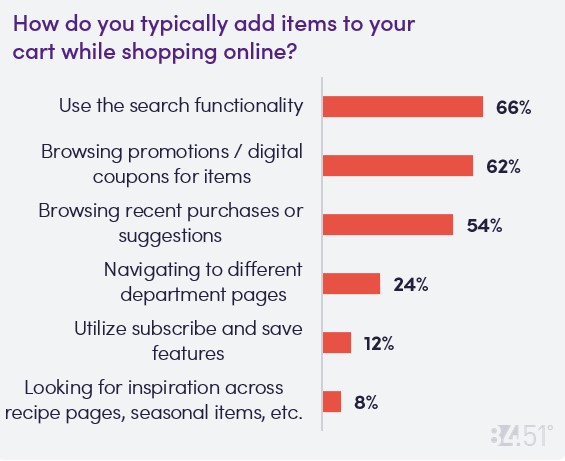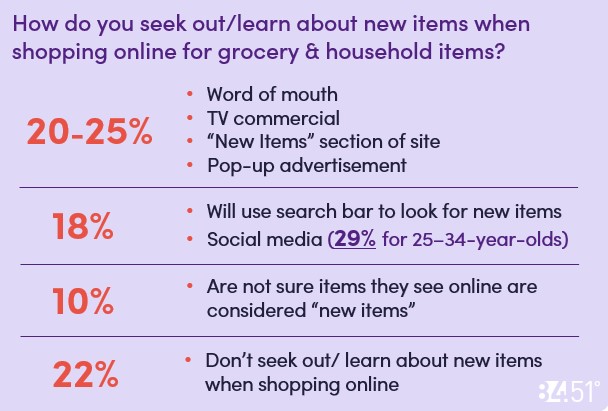Why it matters
With consumers increasingly choosing to split their shopping time between in-store and online, e-commerce retailers must be aware of the factors that keep eyeballs on their site.
Takeaways
- More loyal e-commerce shoppers continue to spend 19% of grocery dollars in-stores.
- To keep them coming back, retailers should offer good CX, convenience, and online coupons.
- Discovery is the main area where in-store beats online: 42% of respondents said that they would be likely to try a “new item” when shopping in-store, compared to only 15% of respondents reporting this likelihood for online.
A new report from Kroger’s intelligence company 84.51° found that loyalty is a big predictor in how omnichannel customers break down their online/offline spend. Moreover, 76% of shoppers who order online for delivery said that they consider convenience to be a key factor in choosing online, vs 31% of in-shoppers reporting their choice as more convenient.
Shopping habits vary across age and income, with certain demographics more likely to participate in omnichannel shopping than others. For example, Millennial consumers, parents, and shoppers that are reported as being “highly engaged with Natural & Organic” are all likely to favor omnichannel.
Omnichannel shoppers are broadly defined as consumers that buy groceries both online and in-store. The 84.51° report found that more loyal e-commerce shoppers continue to spend 19% of grocery dollars in-stores. In contrast, shoppers who report lower e-commerce loyalty spend about 78% of their grocery dollars at brick-and-mortar establishments.
Methodology
The 84.51° report gathered the responses of 400 consumers who had shopped on Kroger’s online site for in-store pickup or delivery, as well as brick-and-mortar throughout 52 weeks (one year).
Accuracy and availability are key with online
Forty-three percent of surveyed respondents stated that selection was a key driver for choosing to shop in-store. In contrast, only 14% of shoppers said that it was a key driver for them in online delivery. Rather, consumers are choosing to shop online because the option is fast and convenient, even for order-online-pickup-in store options.
But making sure online inventory is stocked and accurate is crucial when operating a successful e-commerce business. Eighty-eight percent of shoppers surveyed in the Kroger study said that accuracy was a top priority for them, and 81% said that the availability of items on their list was essential.

Discounts are an incentive for moving online
Among omnichannel shoppers surveyed, 61% of respondents said that they would shop online more than they currently do if they could find a cheaper price that way. Fifty percent reported this flexibility if one or more coupons were available. Many shoppers (62%) even intentionally browse promotions and digital coupons for items.

Shoppers prefer in-store when trying new items
In-store shopping is a good way for more explorative shoppers to browse available products, and satisfy their curiosities through more visual, tactile means. Forty-two percent of respondents said that they would be likely to try a “new item” when shopping in-store, compared to only 15% of respondents reporting this likelihood for online.

In conclusion
The 84.51° report gives us a few key insights into the omnichannel shopper, including the following learnings:
- Digital coupons are essential. Seventy-three percent of respondents noted the option of digital coupons as being their favorite feature of omnichannel. This was particularly true for price-sensitive shoppers.
- Search makes up 59% of total “clicks” among online shoppers.
- Accuracy, availability, and convenience are crucial to a successful online shopping experience.
- Shoppers enjoy online for the ease of use, and in-store for product discovery.
- Online shoppers will switch platforms if they don’t find what they need on one site, so e-commerce retailers must monitor their product inventory and description pages accordingly.

